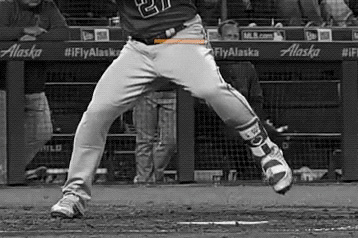IMPROVE MY GAME
Articles
Understanding and Assessing Pelvic Tilt in the Golf Swing
The pelvic tilt is one of the most overlooked and underappreciated movement patterns in the golf swing. While it might not be something that a coach cues in their student’s swing, it should be something that a coach is aware of in their student’s swing.
Here’s Dr. Rose describing pelvic tilt, including how we screen it and how the average PGA TOUR and LPGA player will tilt their pelvis in the golf swing.
The pelvic tilt isn't unique to golf either. It's an important movement pattern in all rotational sports. Watch Mike Trout and Roger Federer. Pelvic tilt is sometimes more apparent in tennis because the feet are off the ground (open chain).


Watch just about any tour-level ball striker in golf and you'll notice them "dumping the bucket of water behind them." As Dr. Rose noted in the video above, it's a power move and a sign that they are sequencing from their lower body to their upper body. Unsurprisingly, Rory McIlroy has one of the prettiest and most pronounced pelvic tilts in golf.

Rory has an incredibly powerful core. As he uses his core muscles to fire his trunk, it actually helps tilt his pelvis posteriorly. His core is so powerful, in fact, that it can cause the pelvis to counter-rotate, as we detailed for ESPN Sports Science.
Poor pevlic control will be an extremely common limitation for many of your students. Inability to pelvic tilt is often associated with swing characteristics such as loss of posture, early extension, reverse spine angle, sway, and slide.
An anterior (or forward) tilted pelvis is very common amongst people who spend extended periods of time sitting down. Sitting has the effect of either weakening or tightening the various muscle groups that would normally maintain a neutral pelvis position. The problem for most of your club golfers is that many of them spend most of the week sitting down at their day jobs.
More importantly however, an anterior tilt pelvis leaves the golfer susceptible to lower back injury, (especially if it is paired with a reverse spine angle during the swing) because it increases the curve of the lower back.
So how can you test if your students struggle to pelvic tilt? Here's Dr. Rose and Dave Phillips describing the Pelvic Tilt test, one of the foundational components of the TPI screen we teach in our Level 1 seminars.
Whenever a coach identifies a limitation through the TPI screen, we recommend they give their student two options: 1) work with the coach to build a swing that compensates for the limitation or 2) refer to a fitness or medical professional who can help the student improve the physical limitation. The good news is that because the pelvis is tilted because of lost muscle tone and muscle imbalance, it can be corrected with simple corrective exercises.